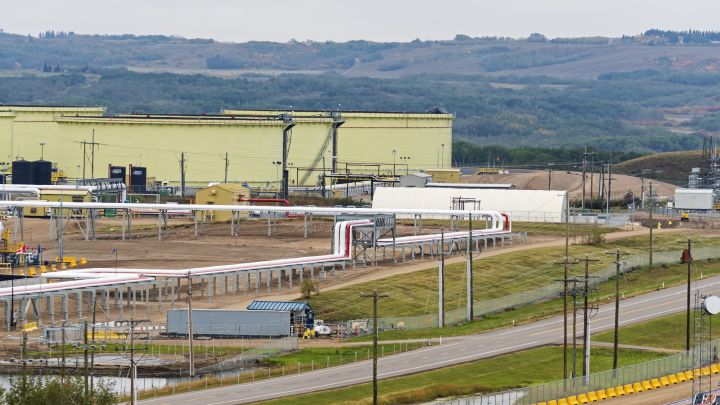Gibson Energy Inc. says it will build a 100,000-barrel-per-day diluent recovery unit near the Alberta oil marketing hub of Hardisty, a strategy expected to free up room in pipelines and on railcars for oilsands exports.

The Calgary-based company says it will partner with US Development Group, LLC, to construct and operate the facility, which would open in 2021.
Diluent, a light oil mixed with sticky, heavy bitumen to allow it to flow in a pipeline, makes up as much as a third of the volume of blended bitumen or “dilbit.”
READ MORE: Oilsands firms considering diluent recovery units to increase crude by rail volumes
The resulting heavy crude will be sent by Canadian Pacific in railcars to a new terminal in Port Arthur, Texas, owned by US Development, to be distributed to refineries on the U.S. Gulf Coast, while the diluent will be re-sold to Alberta oilsands producers.
Gibson says ConocoPhillips Canada, which owns the Surmont thermal oilsands project in northern Alberta with French partner Total S.A., has contracted to process 50,000 barrels per day of bitumen blend at the facility.
Watch below: Some Global News videos about the energy sector.
Oilsands producer Cenovus Energy Inc. has been actively investigating building a diluent recovery unit at its terminal near Edmonton which would cost between $800 million and $1 billion.
Gibson says the resulting “DRUbit” oil will be in a more concentrated, viscous state that creates safety and environmental benefits when transported by rail.
READ MORE: Calgary-based Gibson Energy sells trucking assets, focuses on core business
It says it is in talks with other potential producer and refiner customers to take up the other 50,000 bpd of capacity.
“We expect DRUs to be a critical part of solving the egress challenges western Canadian producers are facing, both today and over the long-term,” said Gibson CEO Steve Spaulding.
“Improved netbacks for producers will drive increased oilfield and related business activity, create new jobs and help revive communities as well as positively benefit all levels of government through increased royalties and other levies.”









Comments